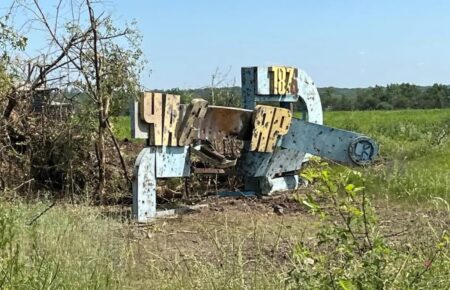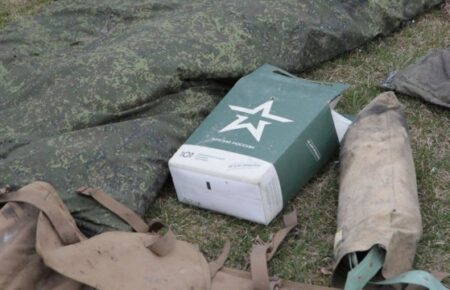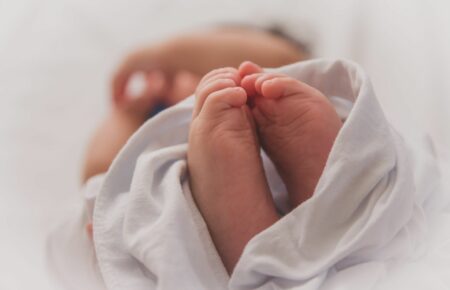
What the Russians wrote in our homes. «Wall Evidence» collects evidence of crimes left by the occupiers
The building is completely in ruins – the aftermath they left behind, remnants of food, and traces of their own life activities. Scattered around are inscriptions, often riddled with grammatical errors. I wanted to capture it all and convey that this is the face of «Russia»
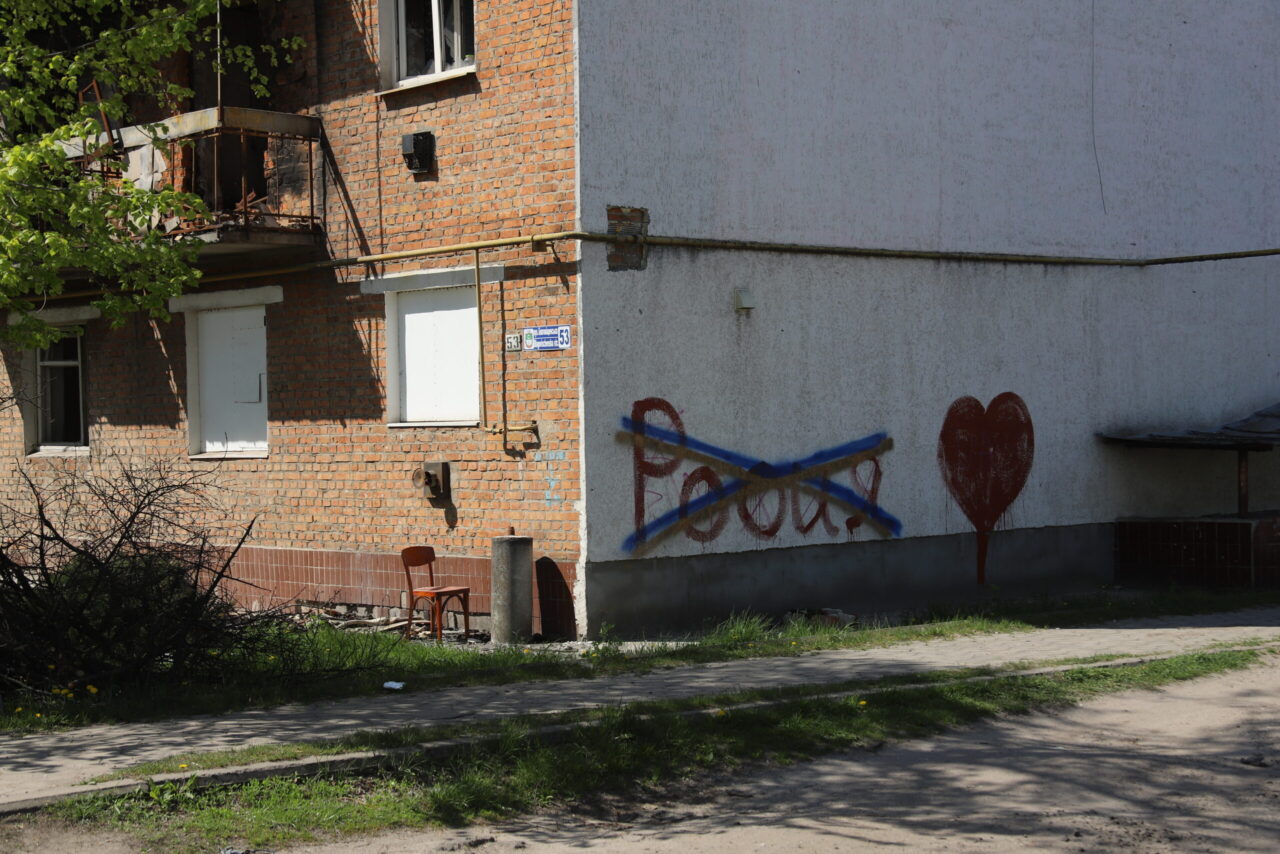 A house in Trostianets/Photo: Oleksandra Yefymenko/Hromadske Radio
A house in Trostianets/Photo: Oleksandra Yefymenko/Hromadske RadioThis material was recorded last year but was never published. On the second anniversary of Russia’s full-scale invasion of Ukraine, its relevance remains just as potent now as it was six months ago.
Before Russia’s full-scale invasion of Ukraine, the cultural institution «MizhVuhamy» was involved in various projects. On their website, available until February 24, 2022, you can find lectures on art, announcements about the search for translators of philosophical texts into Ukrainian, and materials discussing the necessity of creating museum-tourist clusters.
If you search for the institution’s name now, you will encounter dozens of photos featuring inscriptions on walls, fences, and school blackboards. These inscriptions, created using markers, pencils, paint, spray cans, and chalk, were made by the Russian military at different times on Ukrainian territory. Following the de-occupation of these territories, the team is actively collecting, analyzing, and archiving these inscriptions.
This initiative is known as «Wall Evidence«, focusing on what Russians wrote in our homes. Notably, some of the photos from Hromadske Radio’s editorial office are also part of the Wall Evidence archive.
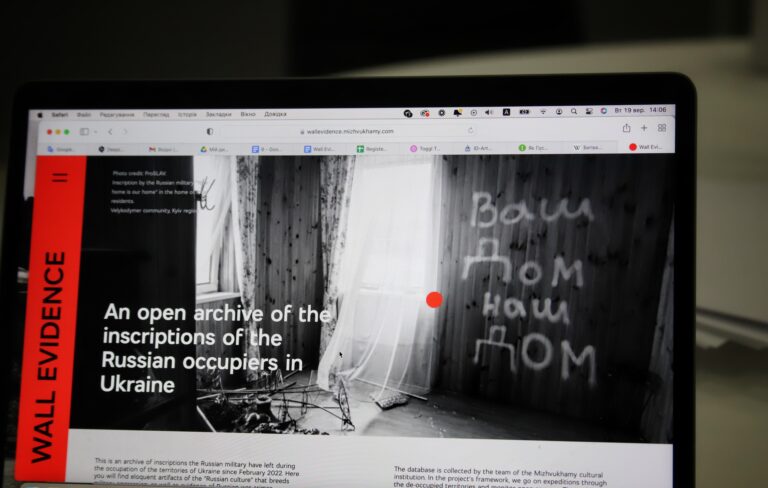
«This is Russia»
After the Ukrainian army liberated the cities and towns of the Kyiv region in the spring of 2022, Pavlo Haidai, the founder of the institution, had the idea to collect inscriptions left behind by the Russians. Initially, a part of the project team visited the town of Borodyanka, where they noticed words, phrases, and sometimes entire texts that had appeared on the liberated territories, clearly written by the Russian military.
«The first inscriptions I saw were «V» marks on the gates of residential buildings. That’s when I realized they were probably based there. At that time, I had no idea about collecting these inscriptions», — says Anastasia Oleksiy, the project’s chief manager. The idea to collect the inscriptions came from Pavlo Haidai.
Accompanied by philosopher Oleksandr Filonenko, he visited Gostomel, where they found a local lyceum that had served as a base for Kadyrov’s men.
«There was a completely ruined building, the mess they left behind, remnants of food, and traces of their own life activities. There were inscriptions around, mostly with grammatical errors. I wanted to capture it all and show that this is «Russia», its face», — says Anastasiia.
Anastasia describes it as a challenge for the team to communicate and work on the project for the Ukrainian audience. She explains that it is much easier to engage in life-affirming activities than to showcase the inscriptions left by Russians:
«We have a community of philosophers, and we approached them to hear some of their personal reflections on this project. Most of them refused to work with this material, stating that it was beneath human dignity. There were concerns that Ukrainians might perceive this project as if we were legitimizing what the Russian military wrote here in Ukraine or somehow justifying them».
However, the audience predominantly perceived the project as socially important.
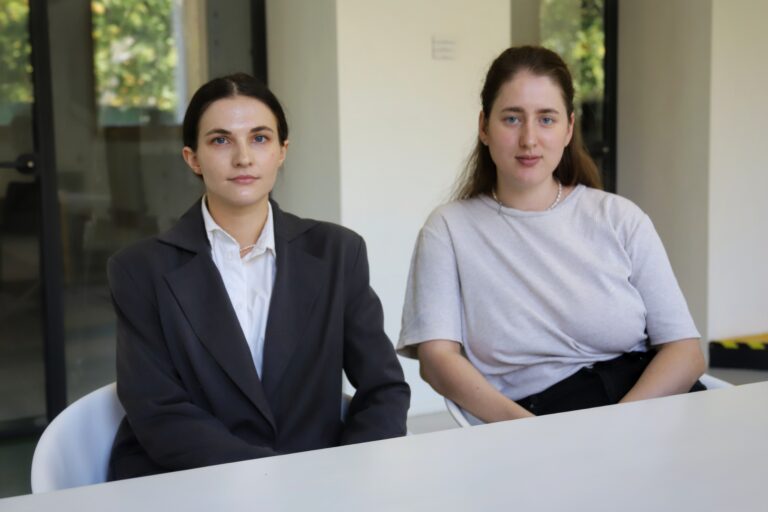
Anastasiia shares a glimpse of a local bar in the village of Velyka Komyshevakha (Izium district, Kharkiv region). Inside the bar, a wall was adorned with Russian slogans.
«One of them stands out the most in my memory: «There are two answers to all questions in Ukraine: 1. It didn’t happen. 2. They deserve it». This inscription was particularly revealing for me. Another one that struck me was: «It’s not a war crime if you had fun».
Some of these phrases are reflective of the local internet culture. Interestingly, the last phrase about war crimes surfaced on the Russian Internet before the full-scale invasion of Ukraine but during the war.
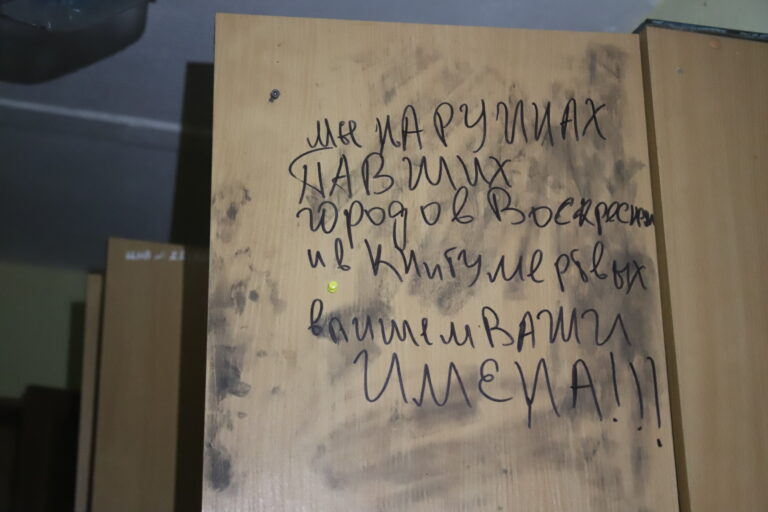
«The longer they were stationed in one location, the more inscriptions there are»
Roksolana Makar, a researcher and editor of the project, oversees the verification and research of the inscriptions. She mentions that the project currently has about 500 photographs in progress. These include not only photos taken by the «Wall Evidence» team but also those contributed by locals, the military, and journalists. They receive up to 10 new inscriptions per week.
«We approach each new photo with caution. There was a case involving a church in the city of Irpin with «Z», «V», «FSB» written on it. Nastia took a picture, and locals later informed her that the markings were made by the people themselves. The church, belonging to the Moscow Patriarchate, was branded in such a way by residents to indicate the presence of pro-Russian collaborators».
The researchers documented the highest number of inscriptions in the Kyiv and Kharkiv regions.
«The longer they were based in one location, the more inscriptions appeared, especially in places like schools. Different Russian groups, such as Wagnerites or Kadyrovites, exhibit distinct handwriting that can be used for identification. These inscriptions often contain highly praising statements about Russia. In some instances, they even leave the brigade number below the writing. OSINT specialists frequently utilize such details to uncover the names and surnames of those who were present», — Roksolana explains.
She notes a recurring phenomenon in the inscriptions she works with, specifically the manipulation of the letters «Z» and «V». The photo below, taken in the village of Kozacha Lopan in the Kharkiv region, illustrates an instance of incorporating Russian war symbols into a single word.
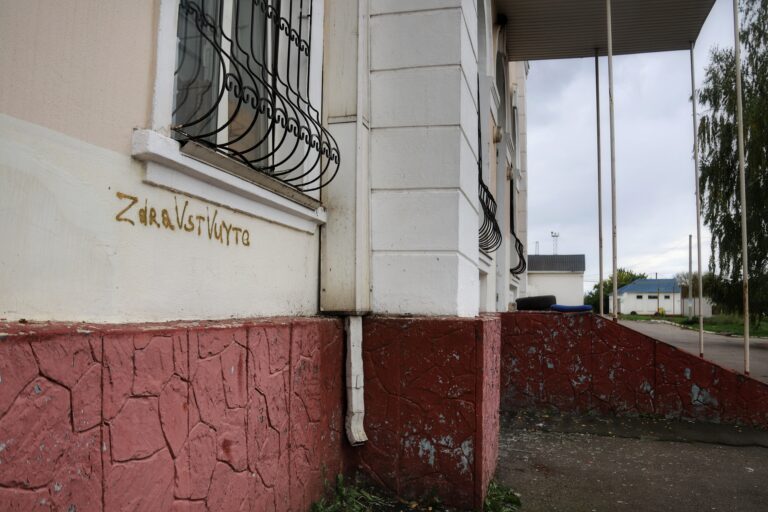
Roksolana points out that even if an inscription initially appears nonsensical, it often has a certain decoding:
«Usually, they extract lines from songs about Wagner and third-rate fiction books. This, in itself, conveys a lot. It indicates the cultural space these soldiers are immersed in».
Additionally, Anastasia and Roksolana observe that the theme of the Second World War can be discerned in the phrases left behind, and sometimes even in entire poems. Examples include phrases like «on to Berlin!» and references to «1941-1945» in various forms.
«If Ukraine loses, such inscriptions will appear on the squares of other European cities»
Anastasiia sheds light on the phenomenon of discovered inscriptions, linking it to a desire to anchor oneself in space and leave a mark:
«There’s a tradition in the Russian-speaking world of writing «Vasya was here» in various places, from fences to architectural monuments. The crucial aspect is what exactly is written. In some instances, we traced the motivation. For example, we’ve encountered inscriptions with apologies. Sociologists hypothesize that this is a way of disclaiming responsibility, as if saying, well, I apologized. It’s evident that there is no sentiment attached to this».
Anastasiia humorously notes that after two years of working with the Wall Evidence project, she automatically reads all inscriptions she comes across:
«It’s impossible to engage in art or culture nowadays without addressing the war. Our team simply doesn’t see it as possible. While some people focus on volunteer work, we’ve chosen this perspective – to reveal what is in the minds of the Russians, to show what they came to convey to us amidst killing our people».
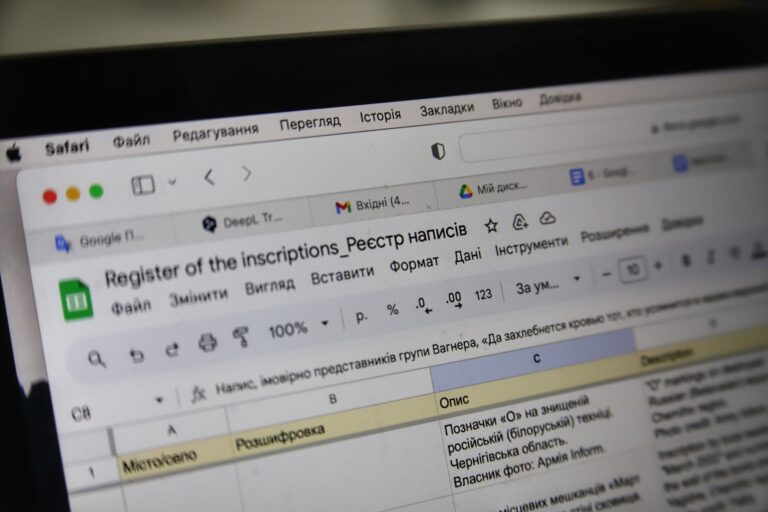
The team plans to reposition the cultural project as an evidence base for war crimes committed by the Russian military on the territory of Ukraine:
«We have lawyers on our team, and this is the direction we intend to pursue in the future. The primary goal was to collect and systematize evidence and present it to a foreign audience».
Last year in Paris, not far from the Louvre, on May 9th, someone left an inscription in Russian mentioning the years 1941-1945, something about «we can repeat it»б and asserting that «Crimea is ours». Anastasia and Roksolana hypothesize that similar inscriptions may exist in many other European cities. For them, it is crucial to convey the idea that if Ukraine does not survive this war, the prevalence of such phrases may significantly increase. However, they won’t be isolated incidents; instead, they will be systematic. These inscriptions won’t be left by individuals with spray paint evading local police, but by individuals armed with weapons and Russian flags on their patches. Moreover, they won’t appear in the squares and streets of European cities but within destroyed houses and schools.
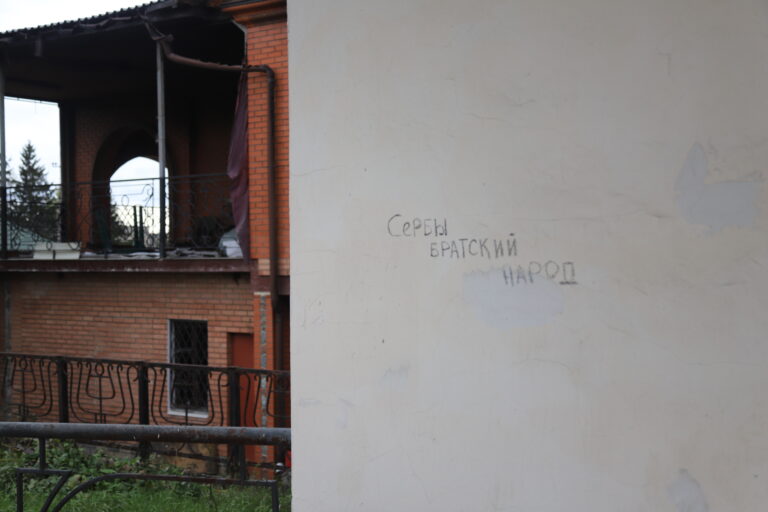
Kozacha Lopan/Photo: Oleksandra Yefymenko/Hromadske Radio
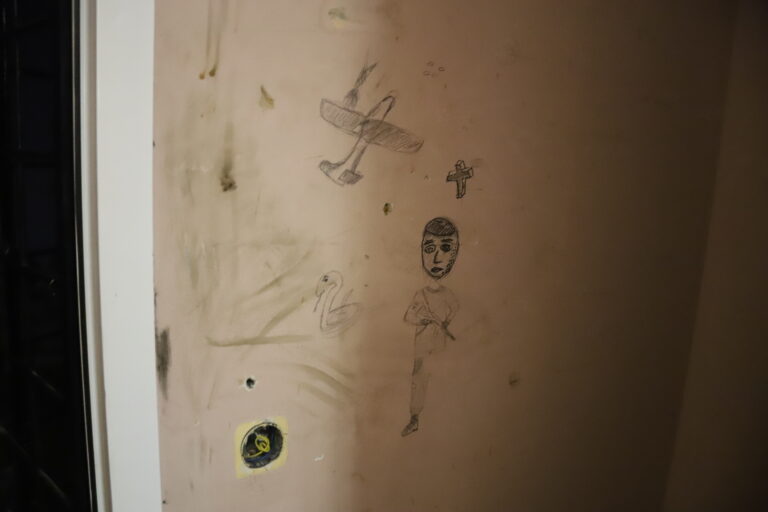
Trostianets railway station, Sumy region/Photo: Oleksandra Efymenko/Hromadske Radio
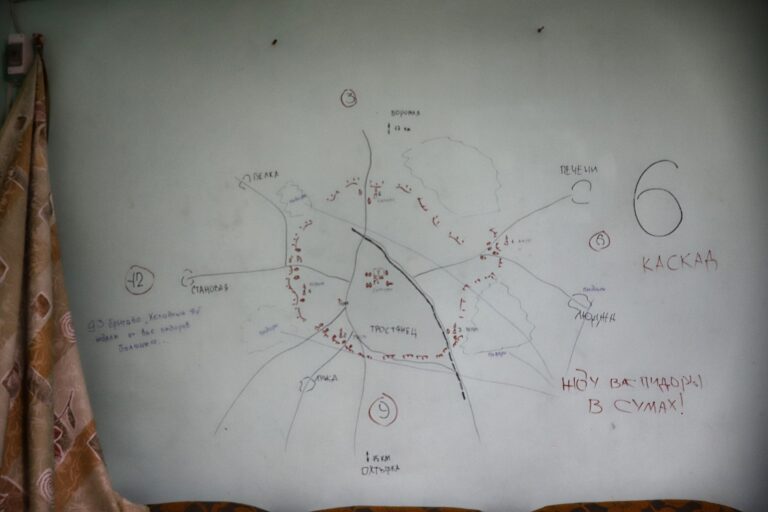
A map drawn by the Russian military on the wall of the Trostianets railway station. This is a plan for the capture of the city of Sumy/Photo: Oleksandra Yefymenko/Hromadske Radio
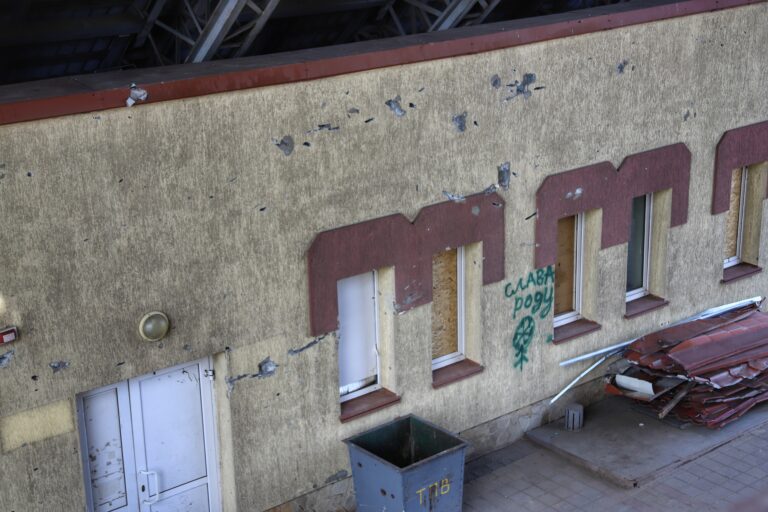
Photo: Oleksandra Yefymenko/Hromadske Radio
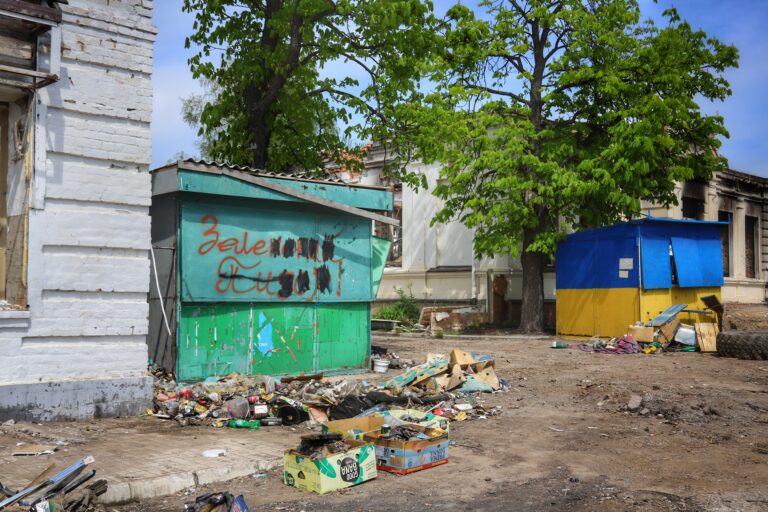
The station square in Trostianets after the Russians / Photo: Oleksandra Yefymenko/Hromadske Radio
